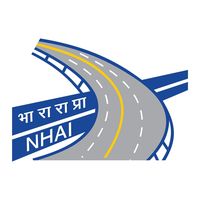Highway Upgrades and Urban Transit: A New Era for Indian Infrastructure
October 19, 2024, 4:57 am

Location: France, Ile-de-France, Saint-Ouen-sur-Seine
Employees: 10001+
Founded date: 1928
Total raised: $10M

Location: India, Delhi, New Delhi
Employees: 1001-5000
Founded date: 1988
Total raised: $4.83B
India's infrastructure landscape is evolving. Recent developments in road and rail projects signal a commitment to modernization and efficiency. From the Mumbai-Agra Highway to the Kangra Highway, these upgrades promise to reshape travel and commerce.
The Mumbai-Agra Highway is undergoing significant changes. Traffic has been diverted along the Indiranagar-Mumbai Naka stretch. This is due to ongoing work to lay a concrete layer over the existing asphalt. The National Highway Authority of India (NHAI) is spearheading this project. The stretch will remain closed until November 9. Motorists are advised to use service roads to navigate around the construction.
This upgrade is not just a patch job. It’s a long-term solution to a persistent problem: potholes. The concrete layer aims to mitigate the damage caused by heavy rains. For months, NHAI has been working on a 60-kilometer stretch from Pimpalgaon to Gonde. The goal is clear: improve traffic flow and reduce travel times. Once completed, the new surface will provide a smoother ride for all.
Meanwhile, in Himachal Pradesh, the Central Government has approved the four-laning of a crucial 50-kilometer stretch of the Kangra Highway (NH-88). This highway is vital for connecting key towns in the region. The expansion from two lanes to four will enhance traffic flow and safety. It’s a lifeline for locals and tourists alike.
The Kangra Highway upgrade is part of a broader initiative to improve national highways across India. The government aims to boost regional development through better connectivity. The new infrastructure will address congestion issues and promote trade and tourism. This is not just about roads; it’s about economic growth.
In urban transit, the Nagpur Metro is making strides. Rail Vikas Nigam (RVNL) has won the bid for the civil package C6 of the Nagpur Metro Phase 2 project. This contract involves constructing 10 elevated metro stations along a 19.4-kilometer stretch. The project includes both western and eastern extensions of the Aqua Line. This expansion will enhance public transport options in Nagpur.
Chennai is also stepping into the future. The city has received its first driverless trainset for the Phase II project. This marks a significant milestone in urban mobility. The new trains, ordered from Alstom, are designed for a 26-kilometer corridor. They promise an efficient, eco-friendly travel experience. With 28 stations planned, this project aims to transform how residents navigate the city.
The National Green Tribunal (NGT) is also playing a crucial role in environmental management. It has directed Uttarakhand to establish proper waste management facilities in Kedarnath. This follows concerns about untreated sewage polluting the Mandakini river. The NGT's directive emphasizes the need for sustainable practices in tourism-heavy areas. It’s a reminder that infrastructure development must go hand in hand with environmental stewardship.
These projects reflect a growing recognition of the importance of infrastructure in India. They are not just about building roads and railways. They are about creating a framework for economic growth and sustainability. Improved connectivity will attract investment and boost local economies. It will also enhance the quality of life for residents.
However, challenges remain. Construction delays, environmental concerns, and funding issues can hinder progress. The government must navigate these obstacles to ensure timely completion. Public awareness and community involvement are also crucial. Residents should be informed and engaged in the planning process.
As these projects unfold, the impact will be felt across the nation. Improved highways and metro systems will facilitate smoother travel. They will reduce congestion and travel times. This will benefit commuters, businesses, and tourists alike.
In conclusion, India stands at a crossroads. The commitment to upgrading infrastructure is evident. From highways to metro systems, the focus is on modernization and efficiency. These developments are not just about roads and trains; they are about building a better future. A future where connectivity drives growth and sustainability. The journey has begun, and the destination is promising.
The Mumbai-Agra Highway is undergoing significant changes. Traffic has been diverted along the Indiranagar-Mumbai Naka stretch. This is due to ongoing work to lay a concrete layer over the existing asphalt. The National Highway Authority of India (NHAI) is spearheading this project. The stretch will remain closed until November 9. Motorists are advised to use service roads to navigate around the construction.
This upgrade is not just a patch job. It’s a long-term solution to a persistent problem: potholes. The concrete layer aims to mitigate the damage caused by heavy rains. For months, NHAI has been working on a 60-kilometer stretch from Pimpalgaon to Gonde. The goal is clear: improve traffic flow and reduce travel times. Once completed, the new surface will provide a smoother ride for all.
Meanwhile, in Himachal Pradesh, the Central Government has approved the four-laning of a crucial 50-kilometer stretch of the Kangra Highway (NH-88). This highway is vital for connecting key towns in the region. The expansion from two lanes to four will enhance traffic flow and safety. It’s a lifeline for locals and tourists alike.
The Kangra Highway upgrade is part of a broader initiative to improve national highways across India. The government aims to boost regional development through better connectivity. The new infrastructure will address congestion issues and promote trade and tourism. This is not just about roads; it’s about economic growth.
In urban transit, the Nagpur Metro is making strides. Rail Vikas Nigam (RVNL) has won the bid for the civil package C6 of the Nagpur Metro Phase 2 project. This contract involves constructing 10 elevated metro stations along a 19.4-kilometer stretch. The project includes both western and eastern extensions of the Aqua Line. This expansion will enhance public transport options in Nagpur.
Chennai is also stepping into the future. The city has received its first driverless trainset for the Phase II project. This marks a significant milestone in urban mobility. The new trains, ordered from Alstom, are designed for a 26-kilometer corridor. They promise an efficient, eco-friendly travel experience. With 28 stations planned, this project aims to transform how residents navigate the city.
The National Green Tribunal (NGT) is also playing a crucial role in environmental management. It has directed Uttarakhand to establish proper waste management facilities in Kedarnath. This follows concerns about untreated sewage polluting the Mandakini river. The NGT's directive emphasizes the need for sustainable practices in tourism-heavy areas. It’s a reminder that infrastructure development must go hand in hand with environmental stewardship.
These projects reflect a growing recognition of the importance of infrastructure in India. They are not just about building roads and railways. They are about creating a framework for economic growth and sustainability. Improved connectivity will attract investment and boost local economies. It will also enhance the quality of life for residents.
However, challenges remain. Construction delays, environmental concerns, and funding issues can hinder progress. The government must navigate these obstacles to ensure timely completion. Public awareness and community involvement are also crucial. Residents should be informed and engaged in the planning process.
As these projects unfold, the impact will be felt across the nation. Improved highways and metro systems will facilitate smoother travel. They will reduce congestion and travel times. This will benefit commuters, businesses, and tourists alike.
In conclusion, India stands at a crossroads. The commitment to upgrading infrastructure is evident. From highways to metro systems, the focus is on modernization and efficiency. These developments are not just about roads and trains; they are about building a better future. A future where connectivity drives growth and sustainability. The journey has begun, and the destination is promising.
